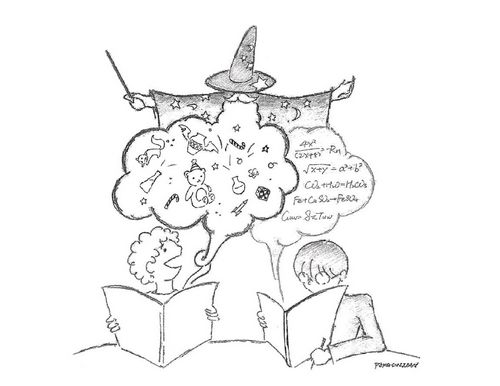Where is China's J.K. Rowling?
- By Geoffrey Murray
 0 Comment(s)
0 Comment(s) Print
Print E-mail
China.org.cn, August 4, 2011
E-mail
China.org.cn, August 4, 2011
|
|
|
[By Peng Shijian/China.org.cn] |
One lasting memory of an English childhood was the joy of discovering books. Christmas Day, for example, still evokes an image of a young boy huddled by the living room fire devouring the latest novels that filled the Christmas stocking.
Hours of enthrallment over the adventures of Jim Hawkins in Treasure Island, with its vast cast of colorful characters like Long John Silver, Ben Gunn, the villainous Black Dog and Blind Pew; or Robin Hood and his Sherwood Forest outlaws such as Little John, Friar Tuck and Will Scarlet jousting with the evil Sheriff of Nottingham; or Alice, pursuing the White Rabbit through Wonderland to encounter such oddities as the Cheshire Cat, the Mad Hatter, the Queen of Hearts ('off with his head!'), etc.
As a child, I dreamt of a time when I would live in a house where every wall was lined with bookshelves almost like a public library (finally a reality in Beijing). Beautiful leather-bound books more than 150 years old (oh, that wonderful bookish smell!) rub shoulders with modern paperbacks – always there to be read (or re-read) for study or just sheer pleasure.
Alas, with the arrival of television and computers, younger generations seem to have lost that deep love of books that was common for older generations like mine, and was the inspiration for me to become a writer.
This certainly appears to be the case in China. Writing in the journal China Comment last year, for example, Wu Xiaoying quoted a survey showing Chinese children only read one book per year on average, compared to European counterparts who read five to six. Of course, this is reading for pleasure not study, which admittedly occupies so much Chinese time.
Even in the West, though, book reading among the young appeared to be in continuous and, perhaps, terminal decline until J.K Rowling invented Harry Potter.
China is no newcomer in creating literature for children. More than seven hundred years ago, the Three-Character Classic (San Zi Jing) taught them national moral values, history, education and geography.
And, today, the Chinese production of books aimed at children is certainly not moribund. According to official statistics, the number of children's books hit 10,000 kinds in 2009, compared to 200 in the early 1970s, while total printed copies rose from 30 million to 600 million.
But the question could be asked: is anyone reading them?
Compare the United Kingdom, where around 10,000 new children's titles are also published every year. At present more than 60 million are sold annually, almost equal to the national population. The UK supplies a fifth of the world market in this sector.
From long personal experience, I'd say the Chinese problem is not quantity but quality (in terms of what children might be tempted to read).
Go to Forum >>0 Comment(s)
 Add your comments...
Add your comments...
- User Name Required
- Your Comment
- Racist, abusive and off-topic comments may be removed by the moderator.






